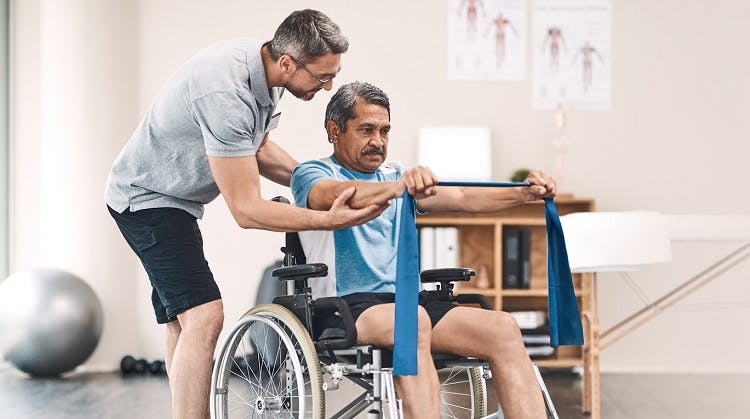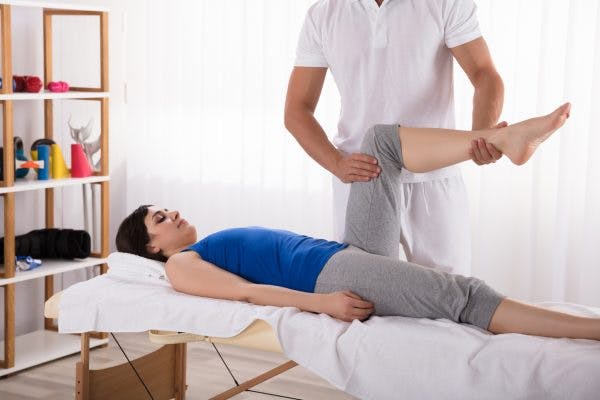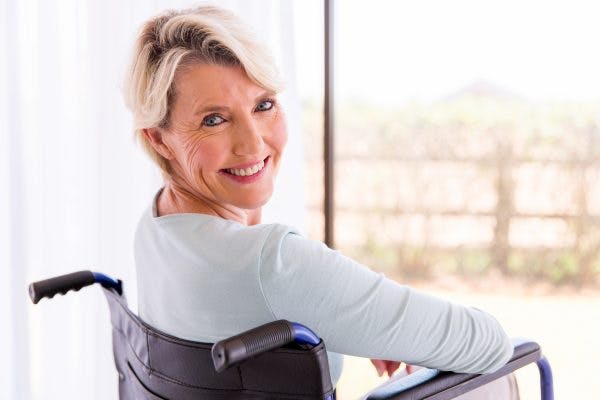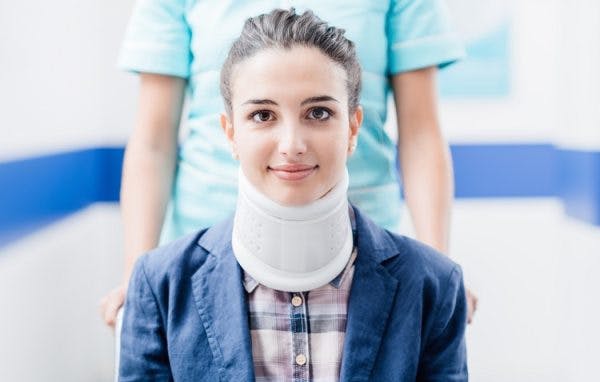An incomplete spinal cord injury can result in a wide range of sensory and/or motor impairments. Depending on the severity of an individual’s spinal cord injury, affected functions and recovery outcomes will vary. Fortunately, there is often potential for individuals with incomplete spinal cord injuries to recover functions affected by injury.
To help you understand incomplete spinal cord injuries, this article will discuss:
What is an Incomplete Spinal Cord Injury?

An incomplete spinal cord injury describes to damage to the spinal cord that partially disrupts the transmission of signals between the brain and muscles. The brain and body communicate by passing signals through the spinal cord and peripheral nerves. When the neural pathways that transmit signals become damaged, signals can no longer reach their desired destination.
As a result, motor signals (signals that activate movement) from the brain may not be able to reach areas below the level of spinal cord injury. Likewise, sensory signals (signals that help the brain perceive touch) from areas below the level of injury may not be able to reach the brain. Consequently, individuals experience loss of sensation and motor control below their level of injury after a spinal cord injury.
When a spinal cord injury is incomplete, some neural pathways at the level of injury are left unaffected. As a result, individuals may have some preserved sensation and/or motor control in areas below their level of injury.
When all neural pathways at the level of injury have been affected, it is called a complete spinal cord injury. These result in no remaining sensory or motor functions below the level of injury. Generally, the more spared neural pathways an individual has after injury, the better their recovery outlook. In the following section, we’ll discuss common causes of incomplete spinal cord injuries.
Causes of Incomplete Spinal Cord Injury
Various events can forcefully impact the spinal cord and cause an incomplete spinal cord injury.
The most common causes of incomplete spinal cord injuries include:
- Motor vehicle accidents
- Falls
- Acts of violence
- Contact sports injuries
- Gunshot wounds
However, any sort of event that causes compression of the spinal cord can cause a spinal cord injury. While neural tissue damage sustained following a spinal cord injury is permanent, the spinal cord is extremely adaptive and can often be trained to recover affected functions. The following section will differentiate the various types of incomplete spinal cord injuries.
Types of Incomplete Spinal Cord Injury
The extent of sensorimotor loss experienced after an incomplete spinal cord injury primarily depends on the location of the damage. In fact, there are 4 main types of incomplete spinal cord injuries that result in different forms of sensorimotor loss.
1. Anterior Cord Syndrome
Anterior cord syndrome occurs when the front two-thirds of the spinal cord become damaged. It often results in the complete loss of motor function and altered sensation below your level of injury.
This type of incomplete spinal cord injury is often caused by damage to the anterior spinal artery, which blocks blood flow at that level of injury. It can also occur when the spinal column is dislocated forward. In these scenarios, the front (ventral) side of the spinal cord is compressed by the bottom part of the spine, resulting in an anterior cord syndrome.
Sensory functions that transmit information regarding pain and temperature are commonly affected due to damage in the spinothalamic tracts.
2. Central Cord Syndrome
Central cord syndrome is the most common type of incomplete spinal cord injury, making up about 15-25% of all incomplete SCIs. It most commonly occurs when there’s damage to the middle region of the spinal cord from neck hyperextension. A prevalent cause of central cord syndrome is severe whiplash from car accidents, especially when the impact of the crash causes the neck to thrust forward.
Central cord syndrome is characterized by more weakness in the arms than the legs. This is because nerves that control arm movements are more centrally located than nerves that control the legs, which are found closer to the sides. Although sensation deficits vary, changes in sensation are often seen in the upper back and the back of the arms. These changes frequently include altered pain and temperature sensations, and sometimes a change in light touch sensations.
3. Posterior Cord Syndrome
Although rare, posterior cord syndrome occurs when there’s damage at the back of the spinal cord. It generally causes a loss of proprioception (your sense of where your body is and how it moves), difficulties with discriminating between two points of contact with the skin, and loss of ability to feel deep touch below your level of injury.
However, strength as well as your ability to process pain, temperature, and light touch sensations are usually not affected.
4. Brown-Séquard Syndrome
Brown-Séquard syndrome is a rare type of incomplete spinal cord injury that occurs following 2-4% of all SCIs. It describes when one side (left or right) of the spinal cord becomes damaged.
Individuals with this type of incomplete spinal cord injury generally experience loss of movement on the same side of the lesion, as well as decreased proprioception and vibration sense. Because the spinothalamic tracts cross at the middle of the spinal cord, pain and temperature sensations on the opposite side of the injury are often affected.
Individuals may also become susceptible to other complications as a result of damage to the spinal cord. Up next, we’ll discuss potential secondary effects of incomplete spinal cord injuries.
Secondary Effects of Incomplete Spinal Cord Injury
Depending on the level and severity of an incomplete spinal cord injury, individuals may experience a wide range of secondary effects. Generally, the greater the severity of the spinal cord lesion, the greater the risk for developing secondary complications.
Secondary effects of incomplete spinal cord injuries include:
- Loss of sensation
- Loss of motor control
- Spasticity
- Chronic pain
- Numbness
- Tingling
- Autonomic dysreflexia
- Spinal shock
- Sleep difficulties
- Bowel and bladder dysfunction
- Sexual dysfunction
- Swelling of the extremities
- Cold hands and feet
It’s essential to be aware of potential complications that make arise following a spinal cord injury so you can seek early intervention for them. Proper management may help prevent complications from progressing and further interfering with your quality of life. The following section will discuss whether recovery after incomplete spinal cord injury is possible.
Recovery Outlook for Incomplete Spinal Cord Injuries
Because incomplete spinal cord injuries result in only partial damage, some neural pathways at the level of injury have been spared and remain intact. As a result, communication between the brain and some areas below the level of injury is possible.
These spared neural pathways play a critical role in determining recovery outlook because they are capable of utilizing neuroplasticity. Neuroplasticity refers to the central nervous system’s ability to make adaptive changes based on the behaviors we repetitively practice.
The more you practice a movement affected by SCI, the better the spinal cord gets at perceiving demand for that function. This repetitive stimulation encourages spared neural pathways in the spinal cord to make adaptive changes and rewire functions affected by injury to healthy, unaffected regions.
Generally, the milder the spinal cord injury, the greater the recovery potential. However, as long as the spinal cord injury is incomplete, there is potential for functional recovery. By participating in rehabilitative therapies, individuals can receive the targeted treatment they need to develop motor control, manage sensation deficits, cope, and improve their independence.
Treatment for Incomplete Spinal Cord Injuries
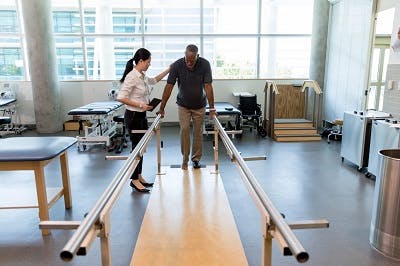
Treatment for incomplete spinal cord injury differs for each individual because every SCI and its recovery process is unique. Working with a team of rehabilitative specialists will help individuals identify their specific weaknesses and develop them. Below, we’ll discuss several rehabilitation therapies and management interventions that can assist in incomplete spinal cord injury recovery.
Physical Therapy
Physical therapy for incomplete spinal cord injuries focuses on improving an individual’s motor control through repetitive practice of targeted exercises. A physical therapist will evaluate the individual’s functional abilities and guide them through a customized exercise regimen designed to help stimulate neuroplasticity in the spinal cord, strengthen the muscles, and maintain range of motion.
Occupational Therapy
Occupational therapy for incomplete spinal cord injuries primarily focuses on helping individuals develop their functional independence. This often involves practicing or learning new ways to perform everyday activities such as getting dressed, feeding, and performing transfers.
Occupational therapists may also teach individuals about risks associated with loss of sensation and/or motor control following an SCI and the most effective ways to prevent them. For example, they may discuss how reduced movement due to paralysis can contribute to the development of pressure sores.
Speech Therapy
Following a high-level incomplete spinal cord injury, individuals may experience weakness of the muscles around their mouth (the orofacial muscles). This can affect their ability to breathe, speak, and eat on their own. By working with a speech-language pathologist, individuals may be able to learn effective ways to manage their orofacial deficits and improve them.
Psychotherapy
While an incomplete spinal cord injury directly affects motor control and sensation, it can also indirectly affect an individual’s mental health. Learning to cope after a spinal cord injury may be challenging as it can require some major lifestyle adjustments. By participating in psychotherapy, individuals can better understand their negative feelings and get the help they need to effectively cope and overcome them.
Orthotics
Individuals with weakness in their limbs following an SCI may find it difficult to maintain correct form during movement. Wearing orthotic devices such as braces and splints helps provide structural support.
Additionally, many individuals with incomplete spinal cord injuries experience involuntary muscle contractions known as spasticity. This can pull the limbs into abnormal positions and negatively impact an individual’s form and posture. Wearing an orthotic device will help hold the spastic limb in place to prevent further contractures and gently stretch the spastic muscle.
Medications
Often, spasticity can make it difficult for individuals with spinal cord injuries to participate in rehabilitative therapies to their full potential because tight muscles restrict their range of motion. Nerve blockers like Botox or muscle relaxants like baclofen can help temporarily relieve spasticity so that individuals can participate more fully in their rehab therapies. Although the effects of medications do wear off, improvements made while using Botox of baclofen can be long-lasting due to neuroplasticity.
Additional medications may be prescribed depending on what types of secondary complications arise.
Surgery
Those with severe forms of spasticity after incomplete SCI may require surgery to reduce muscle tightness. Generally, surgeries for spasticity reduction include manual lengthening of the affected muscles and tendons or selective incisions of the nerves to reduce the excitability of muscle contractions.
Incomplete Spinal Cord Injury: Key Points
Incomplete spinal cord injuries result in partial loss of motor control and sensation in areas below the level of injury. Because some areas of the spinal cord at the level of injury are unaffected, there is potential for spared neural pathways to utilize neuroplasticity and recover functions weakened by damage.
Through intensive, targeted training of weakened functions, individuals with incomplete spinal cord injuries may be able to regain motor control and significantly improve their quality of life. We hope this article helped you understand what an incomplete spinal cord injury is and that for many, there is hope for recovery.

